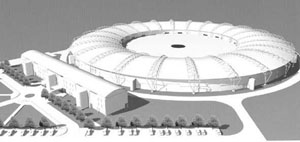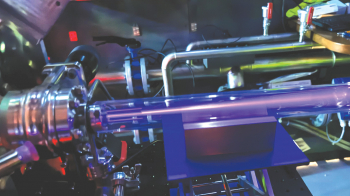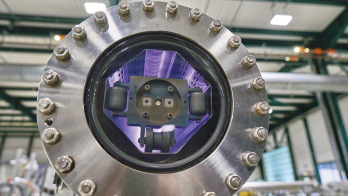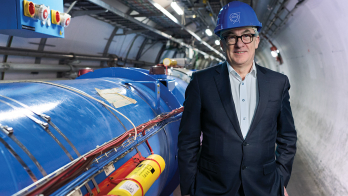
The UK’s Synchrotron Radiation Source (SRS) at Daresbury, near Manchester, is to be replaced by a new machine at the Rutherford Appleton Laboratory near Oxford that should be operational in 2006. Funded by the UK and French governments and by the Wellcome Trust, the “Diamond” synchrotron, operating at several gigaelectron-volts, will serve a several thousand-strong academic and industrial research community spanning a range of scientific disciplines.
Daresbury’s 2 GeV SRS source, completed in 1980, will eventually be phased out, but over the next few years will benefit from additional beamlines. A recent addition is BALLAD (Belfast and Leicester Line at Daresbury).
The SRS was one of the first electron accelerators to be built solely for providing synchrotron radiation. Low wavelength electromagnetic synchrotron radiation is emitted by high-energy electron beams as they are bent, and saps the power of high-energy synchrotrons. In the mid-1950s, scientists realized that this intense radiation could be used in its own right to study molecular and other structures over a range of pure and applied research. Synchrotron radiation users began to group around high-energy electron machines built for particle physics, but such was the appeal of synchrotron radiation research that purpose-built synchrotron radiation sources became popular.
In modern synchrotron sources, the radiation is produced by “insertion devices” placed in the straight sections of the synchrotron to “shake” the beam, rather than using the radiation emitted as the electrons are bent round the arcs of the machine.
The Daresbury lab was established in the 1960s to house the 4 GeV National Institute Northern Acclerator (NINA) electron machine to complement the Nimrod proton machine at Rutherford. With the UK’s decision in the early 1970s to close its national particle accelerators and concentrate particle physics research at CERN, a plan emerged for a dedicated synchrotron electron source – the SRS – to replace NINA and to benefit from the existing Daresbury infrastructure.
A scheme for a major new French national synchrotron radiation source – Soleil – was cancelled last year and France decided instead to become a major partner in Diamond. The substantial Diamond support from the Wellcome Trust, the world’s largest biomedical research charity, underlines the broad appeal of synchrotron radiation as a research tool.
The cancellation of the original French scheme and the switching of UK synchrotron radiation sources from Daresbury to Rutherford have both been the subject of intense debate.





